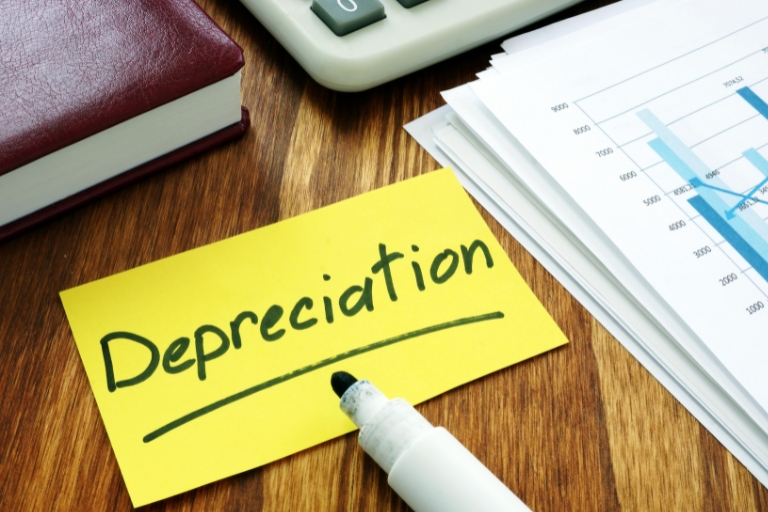Welcome, dear reader, to the wild and wacky world of depreciation! Yes, you heard it right. We’re about to embark on a journey through the thrilling landscape of tax preparation, where depreciation is the star of the show. So, buckle up, grab your calculators, and let’s dive into the exhilarating realm of depreciating assets!
Now, you might be thinking, “Depreciation? Exciting? You’ve got to be kidding me!” But oh, dear reader, we’re not pulling your leg. Depreciation is as exciting as it gets in the world of tax preparation. It’s like the roller coaster of the tax world – full of ups, downs, twists, and turns. So, without further ado, let’s get this roller coaster ride started!
What is Depreciation?
Depreciation, in the simplest terms, is the decrease in value of an asset over time due to wear and tear, age, or obsolescence. It’s like the aging process for your assets. Just as we humans get wrinkles and grey hair, assets lose their value over time. But unlike us, assets can’t use anti-aging creams or hair dye to hide their age!

Now, you might be wondering, “Why should I care about depreciation?” Well, dear reader, depreciation is a crucial part of tax preparation. It allows businesses to deduct the cost of an asset over its useful life, reducing taxable income and, therefore, taxes owed. So, in a way, depreciation is like a magic tax-saving potion!
The Process of Depreciation
Depreciation is not a one-time event. It’s a process that occurs over the useful life of an asset. It’s like a marathon, not a sprint. The value of an asset doesn’t just plummet overnight (unless it’s a really bad day at the stock market!). Instead, it gradually decreases over time.
There are several methods of calculating depreciation, each with its own set of rules and formulas. It’s like a buffet of depreciation options! You can choose the method that best suits your business needs and appetite for complexity. But remember, once you choose a method, you’re stuck with it for the life of the asset. So, choose wisely!
Types of Assets That Can Be Depreciated
Not all assets can be depreciated. Only assets that have a useful life of more than one year can be depreciated. These include tangible assets like buildings, machinery, and vehicles, and intangible assets like patents and copyrights. So, if you’re thinking of depreciating your lunch, think again!
Also, the asset must be used in a business or income-producing activity. Personal assets, like your home or car, cannot be depreciated. So, no, you can’t depreciate your pet cat, even if it does bring you joy and happiness!
How Does Depreciation Affect Tax Preparation?
Depreciation plays a crucial role in tax preparation. It allows businesses to recover the cost of an asset over its useful life by deducting a portion of the asset’s cost each year. This reduces taxable income and, therefore, taxes owed. So, depreciation is like a gift that keeps on giving!
However, calculating depreciation can be a complex process. It involves determining the cost of the asset, its useful life, and the method of depreciation to be used. It’s like solving a complex math problem. But don’t worry, dear reader, we’re here to guide you through this mathematical maze!
Calculating Depreciation
Calculating depreciation involves three main steps. First, determine the cost of the asset. This includes the purchase price and any additional costs to get the asset ready for use, like installation or delivery fees. It’s like tallying up the total cost of a shopping spree!
Next, determine the useful life of the asset. This is the estimated number of years the asset is expected to be in service. It’s like predicting the lifespan of a pet turtle!
Finally, choose the method of depreciation. This determines how the cost of the asset will be spread over its useful life. It’s like slicing a pie – you can slice it evenly, or you can make some slices bigger than others. The choice is yours!
Methods of Depreciation
There are several methods of depreciation to choose from, each with its own set of rules and formulas. The most common methods are the straight-line method, the declining balance method, and the units of production method. It’s like choosing a flavor of ice cream – there’s something for everyone!
The straight-line method is the simplest and most commonly used method. It spreads the cost of the asset evenly over its useful life. It’s like slicing a pie into equal pieces.
The declining balance method accelerates depreciation, allowing for larger deductions in the early years of an asset’s life. It’s like eating the biggest slice of pie first!
The units of production method bases depreciation on the amount of use or production of an asset. It’s like eating pie based on how hungry you are!
Recording and Reporting Depreciation
Recording and reporting depreciation is a crucial part of tax preparation. It involves keeping track of the depreciation of each asset and reporting it on your tax return. It’s like keeping a diary of your assets’ aging process!
Depreciation is recorded as an expense on the income statement and as a reduction in the value of the asset on the balance sheet. It’s like recording your weight loss journey – you record the pounds lost as an achievement and the decrease in your weight as a victory!
Depreciation Schedule
A depreciation schedule is a table that shows the depreciation of each asset over its useful life. It includes the cost of the asset, the method of depreciation used, the amount of depreciation each year, and the accumulated depreciation. It’s like a report card for your assets!
Creating a depreciation schedule can be a complex process. It involves calculating the depreciation of each asset for each year of its useful life. It’s like solving a series of math problems. But don’t worry, dear reader, with a little practice, you’ll be a depreciation whiz in no time!
Reporting Depreciation on Your Tax Return
Depreciation must be reported on your tax return to claim the deduction. It is reported on Form 4562, Depreciation and Amortization, and attached to your tax return. It’s like submitting a homework assignment – you have to turn it in to get credit!
Reporting depreciation can be a complex process. It involves filling out several sections of Form 4562, including the description of the asset, the cost of the asset, the method of depreciation used, and the amount of depreciation for the year. It’s like filling out a job application – you have to provide all the necessary information to get the job!
Conclusion
And there you have it, dear reader, a comprehensive guide to depreciation in the world of tax preparation. We hope you found this journey through the thrilling landscape of depreciation as exciting as we did. Remember, depreciation is not just a decrease in value, it’s a tax-saving magic potion!
So, the next time you’re preparing your taxes, don’t forget to include depreciation. It might seem like a complex process, but with a little practice, you’ll be a depreciation pro in no time. And remember, in the world of tax preparation, depreciation is the star of the show!


